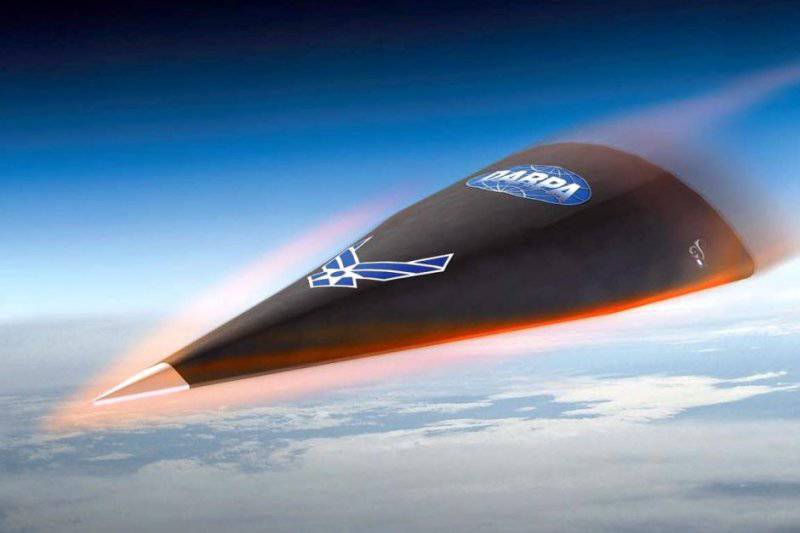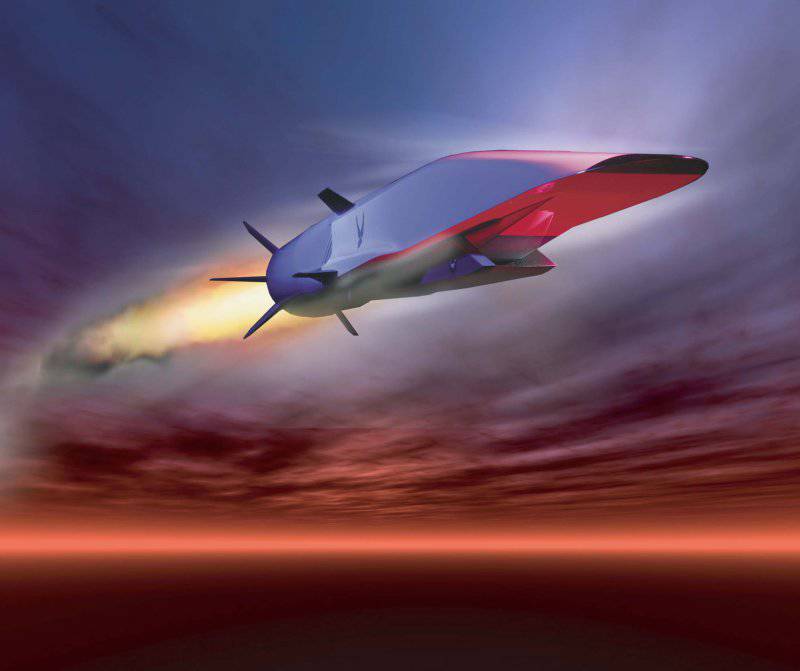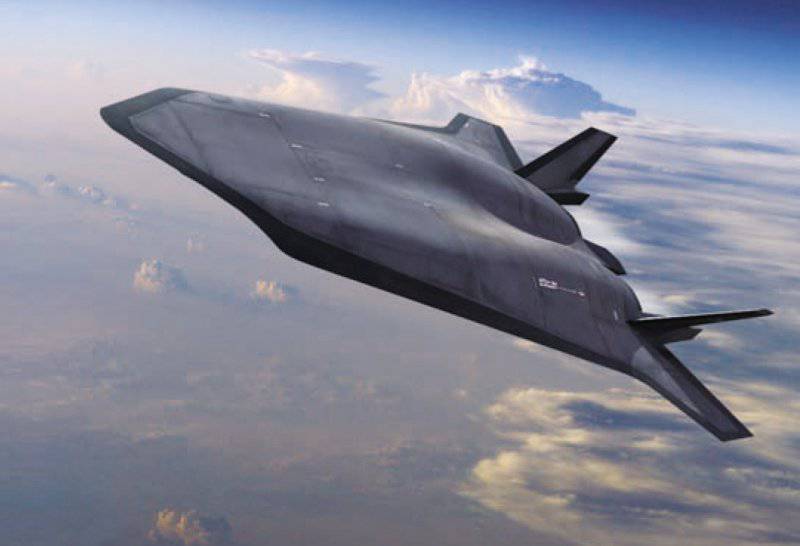Hypersonic prototypes of the United States
Hypersonic aircraft are devices capable of developing a speed of more than five M (1M = 1.1-1.2 thousands of km / h). Hypersonic devices are able to carry out dynamic planning over long distances while maintaining the acquired speed.
Project falkon
Since 2003 in the United States, according to the promising defense research and development of DARPA, design and testing work has been carried out to create a hypersonic aircraft. The project was named "Falkon".
About a dozen companies took contracts worth about half a million dollars each. In 2004, within the framework of DARPA, contacts are received by well-known corporations - Lockheed Martin Aeronautics Co, Andrews Space Inc. and Northrop Grumman Corp. Under contracts worth more than a million dollars each, corporations had to design a hypersonic transport vehicle.
Before the project was delivered:
-construction of a transport platform capable of developing hypersonic speed and carry on itself hyper-rockets or cruise missiles. It is possible to use the platform for non-military purposes;
- building a prototype of Hypersonic Technology Vehicle 1. Tests canceled;
- building Hypersonic Technology Vehicle 2. Tests are underway;
- building Hypersonic Technology Vehicle 3. The project is frozen. There are unofficial data that, in connection with the tests that took place in November, the work was resumed;
- building a compact SLV carrier and engine for designing X-41 CAV.
The main task is to create a new “Hypersonic Cruise Vehicle” rocket, which has the ability to fly about 20 thousands of kilometers in 120 minutes. The goal is delivery to the target of the main unit (executed as the head of a missile - warhead) weighing up to 6 tons. Flight speed around 20 M, the flight should take place at high altitudes.
Tests are carried out according to the following scheme: a prototype with the help of a carrier or an aircraft rises to a greater height and is displayed in horizontal flight. Next, the prototype picks up hypersonic speed, at the given point the aircraft is disconnected, which starts dynamic flight while maintaining the specified speed. The aircraft has a delta wing. There is practically no data on the design, whose photos are filled with the Internet. Whether prototypes are similar to photographs and drawings is not exactly known.
The volunteer
The company "Boeing" presented its development - the X-51A "Waverider" flying object. Created 4 prototype of this project.
According to the technical requirements for the project, X-51А should have a speed indicator 7М. after all the tests, a decision will be made about the fate of the X-51A hypersonic rocket.
Prototypes are built disposable. After testing, the rocket does not recover.
The first successful tests were held in late May last year. The B-52 with the X-51A on board went up to 15 000 meters and disconnected the product. X-51A, using rocket boosters, scored almost 20 000 meters and had speed in 4.8M, the speed indicator in 5M rocket overcame at a distance of 21 300 meters above sea level.
After dialing 5M, the Pratt & Whitney Rocketdyne hypersonic engine is turned on, which worked for 110 seconds, after which it malfunctioned. However, the engine continued to work further until it completely failed at 143 seconds of flight. The X-6A missile could not overcome Mach 51. The designers quickly stated that the rocket had to gain speed in 5M during tests, overcoming the speed in 6M was not the result.
The tests as a result were considered successful, and the result is the best for this time.
But still the flight was planned on the hyperdrive for about 4 minutes. After the perfect flight, it was revealed that the product could not accelerate as planned, quickly overheated and minor failures occurred when transmitting information to the ground.
The following tests were held in mid-June of this year. Failed engine fails, could not restore engine operation. Tests are considered unsuccessful. Work is underway to identify engine failures. The date of the next test is unknown.
Failure leads to success.
The first flight of the Falcon HTV-2 prototype took place at the end of April of this year. The flight was carried out using the carrier Minotaur IV, which is the conversion version of the ICBM MX. It was expected that the product would fly over 30 minutes over 7.5 thousands of kilometers. The trials failed.
According to available data, Minotaur IV brought the product to the calculated height and dispersed to 20M, it is about 23 000 km / h. After that, all communication with the product was lost. Presumably, there was a violation of stabilization, which led to destruction upon entering the dense atmosphere.
The following test takes place in August 2011. The prototype takes into account the errors of the first test. The prototype is successfully separated from the carrier when 20M and goes to the dynamic planning. However, overheating of the product begins here, and after 540 seconds the product loses its stabilization, which ultimately led to the team for self-destruction. Tests are considered unsuccessful.
And finally, on November 17, the third Falcon HTV-2 trials take place. The prototype 3.7 flew thousands of kilometers in about half an hour and fell into the water in a given area. The tests are fully successful.
Additional Information.
Some consider the Falcon HTV-2 to be a planning bomb, but in reality it’s rather a warhead with a number of improvements for planning. Perhaps we will soon hear the United States, following Russia, announcing the presence of ICBMs with hypersonic warheads and other solutions using hypersonic capabilities.
On November 22, the head of the Russian military department stated at the board of the military council that the East-Kazakhstan region, created in Russia, will cope with any missiles, including hypersonic ones. Russia began to declare the presence of hypersonic warheads with 2005 year.



Information